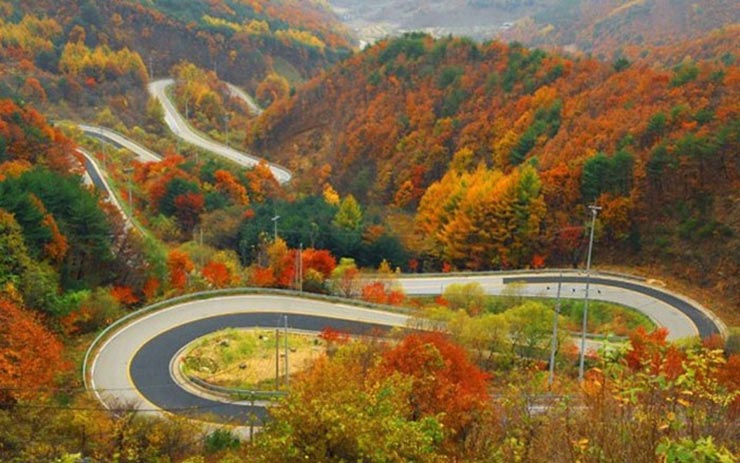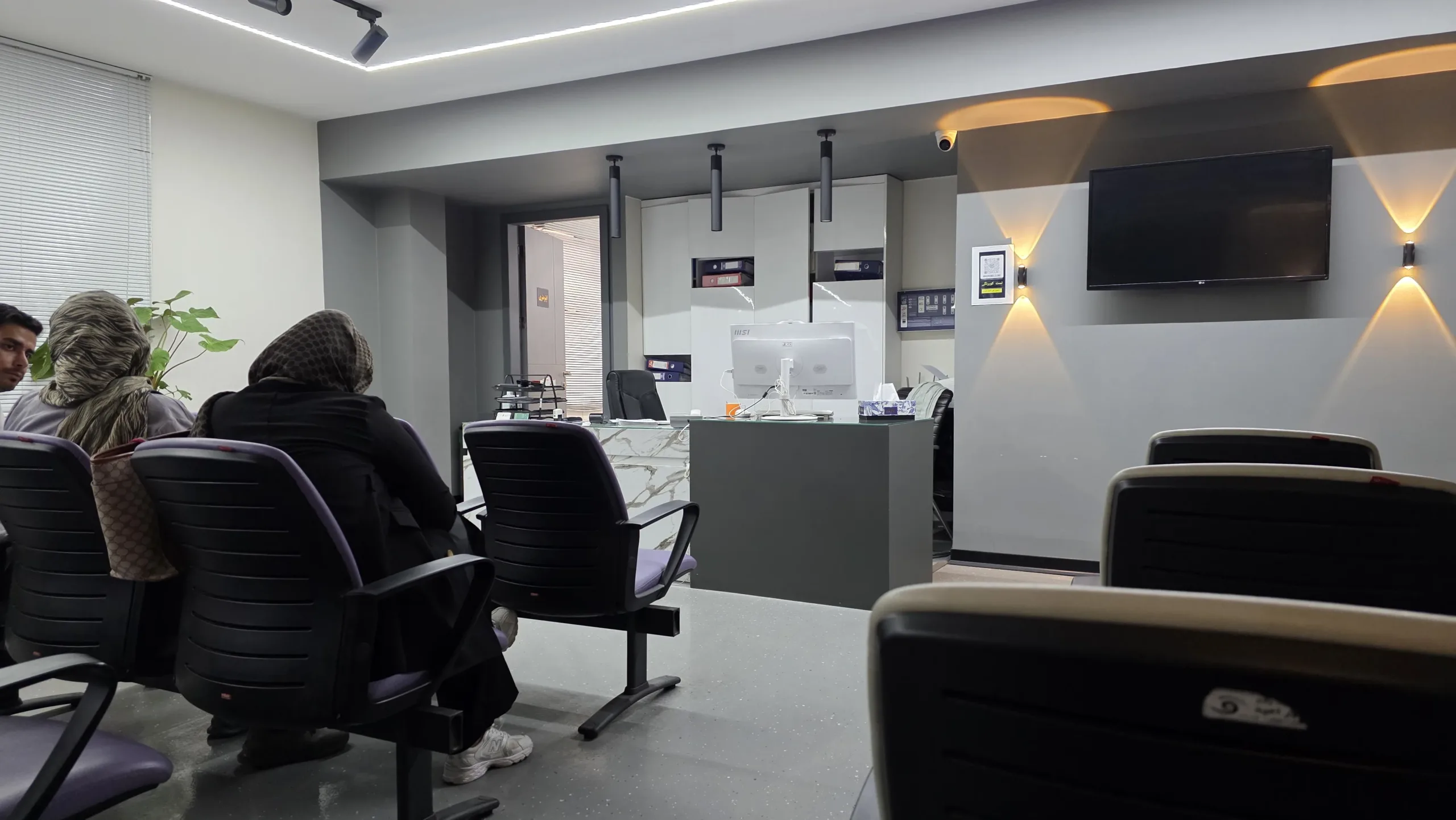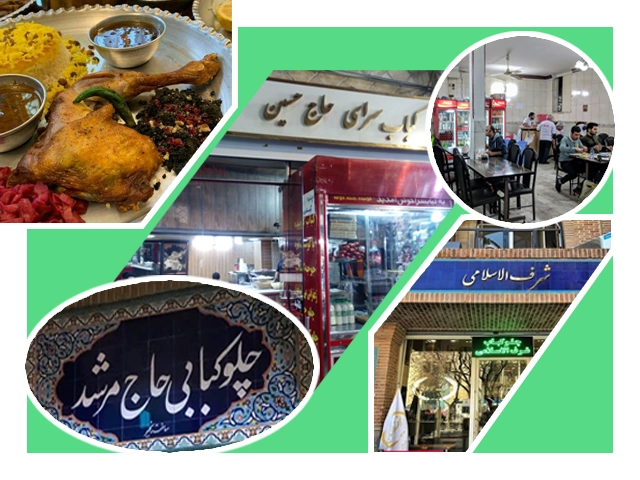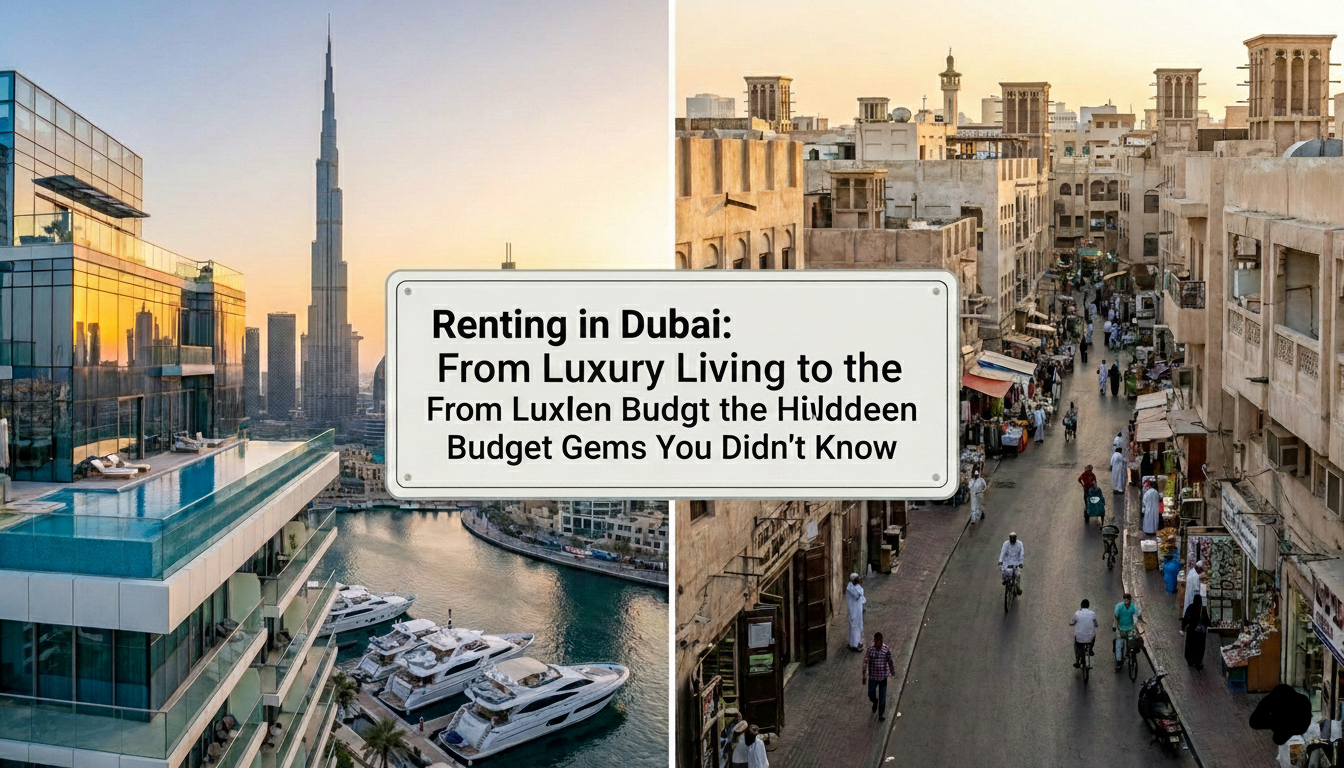What are the must see attractions in Ardabil ?
Ardabil, a city in northwestern Iran, boasts a rich history and several noteworthy attractions. Here are some of the must-see places in Ardabil:
Sheikh Safi al-Din Khanegah and Shrine Ensemble:
This UNESCO World Heritage Site includes the mausoleum of Sheikh Safi, a 16th-century Sufi leader, and features stunning architecture, intricate tilework, and a museum.
The Sheikh Safi al-Din Khanegah and Shrine Ensemble, located in Ardabil, Iran, is a significant cultural and religious complex and a UNESCO World Heritage Site. It is dedicated to Sheikh Safi al-Din Ardabili, a revered Sufi mystic and leader of the Safaviyya order. The ensemble includes various structures, each with its own historical and architectural significance:
Sheikh Safi al-Din Mausoleum: The centerpiece of the complex is the mausoleum of Sheikh Safi al-Din, who was a prominent spiritual figure in the 13th and 14th centuries. The mausoleum is an architectural masterpiece with intricate tilework, calligraphy, and stunning Persian-style designs.
Chini Khaneh (The Tile House): This section of the complex is known for its stunning tilework, showcasing elaborate designs and patterns that exemplify the artistry of the Safavid era.
Khanqah (Sufi monastery): The khanqah was a place for Sufi gatherings, rituals, and spiritual practices. It includes various rooms, corridors, and communal spaces where dervishes would engage in prayer, meditation, and study.
Museum: The complex houses a museum that displays a collection of artifacts, manuscripts, and historical items related to Sufism, the life of Sheikh Safi al-Din, and the Safavid dynasty.
The architectural elements, intricate decorations, and the spiritual significance of the complex make it an essential pilgrimage site for Sufis and a significant cultural attraction for visitors interested in Persian history, architecture, and spirituality.
The ensemble’s design and decoration showcase the finest examples of Islamic art and architecture, particularly from the Safavid period, reflecting the artistic and cultural achievements of that era. The Sheikh Safi al-Din Khanegah and Shrine Ensemble stands as a testament to Iran’s rich cultural heritage and the importance of Sufi traditions in the region.
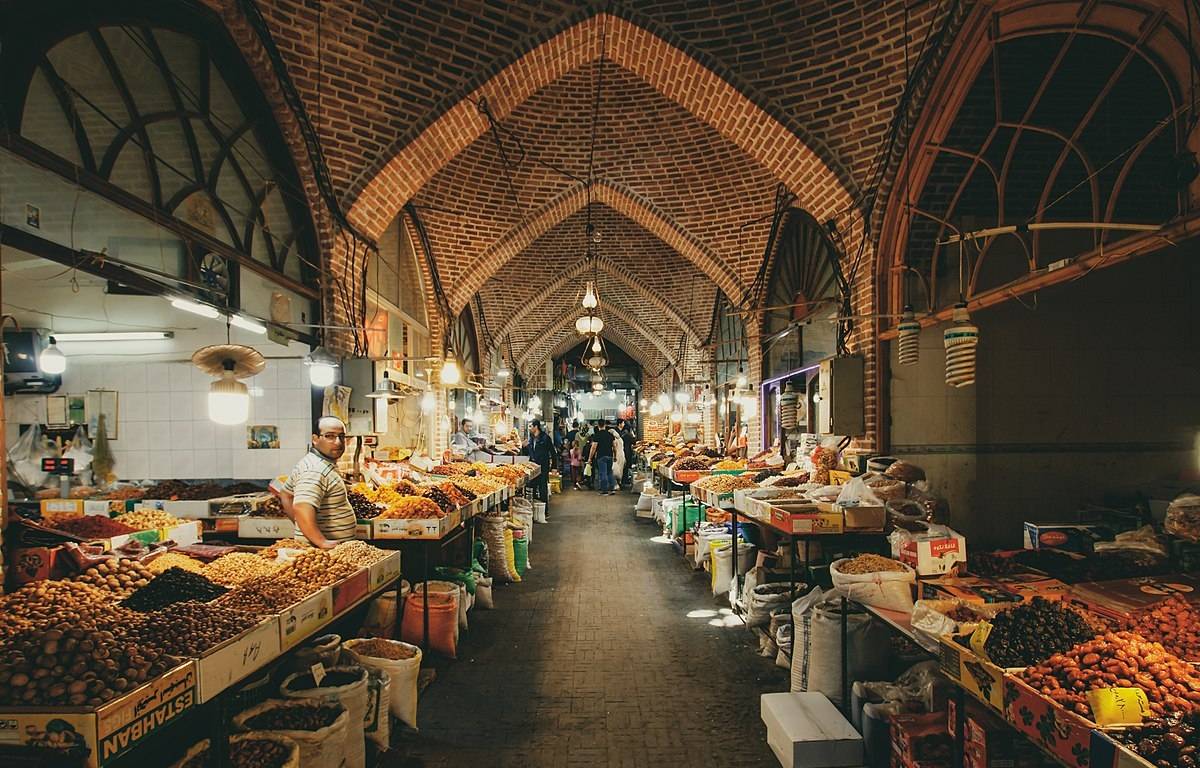
Ardabil Bazaar
This historic marketplace offers a vibrant atmosphere where you can explore local goods, crafts, and traditional items.
The Ardabil Bazaar is a historical marketplace located in the heart of Ardabil, Iran. It’s a vibrant hub of commercial activity, cultural exchange, and a significant center for the local community. Here are more details about this traditional bazaar:
Historical Significance: The Ardabil Bazaar dates back several centuries and has been a vital part of the city’s history. It was a crucial trade center along the ancient Silk Road, facilitating the exchange of goods, culture, and ideas between the East and West.
Architecture and Design: The bazaar is characterized by narrow covered alleys, vaulted ceilings, and interconnected passages that form a labyrinthine network of shops and stalls. Its architectural design, with brick domes and arches, reflects traditional Persian and Islamic architecture.
Shops and Goods: The bazaar is divided into sections, each specializing in specific goods such as carpets, spices, textiles, handicrafts, household items, jewelry, and more. Local artisans and merchants offer a wide array of traditional and modern products, showcasing the region’s craftsmanship and cultural heritage.
Atmosphere: The bustling ambiance of the bazaar is an experience in itself. Visitors can witness the local way of life, observe artisans at work, interact with friendly shopkeepers, and enjoy the lively atmosphere filled with colors, scents, and the sounds of bargaining and social interaction.
Cultural Experience: Exploring the Ardabil Bazaar allows visitors to immerse themselves in the local culture, offering a glimpse into the daily life of Ardabil’s residents. It’s not just a marketplace but also a social space where community members gather and engage in conversation.
Visiting Tips: To make the most of the experience, it’s advisable to visit the bazaar in the morning or early afternoon when it’s livelier. Bargaining is a common practice, so don’t hesitate to negotiate prices, but do so respectfully.
Overall, the Ardabil Bazaar serves as more than just a place for commerce—it’s a living monument to the city’s history, culture, and the age-old tradition of trade and exchange. Visitors can explore its winding passages, appreciate the craftsmanship of local artisans, and enjoy the authentic atmosphere of this historic marketplace.
Ardabil Jameh Mosque
A beautiful mosque with an impressive architectural style, showcasing Persian Islamic design and artistry.
The Ardabil Jameh Mosque, also known as the Jameh Mosque of Ardabil, is a significant historical and architectural landmark located in Ardabil, Iran. It holds great cultural and religious importance and is recognized for its unique architectural features. Here are more details about this mosque:
Historical Significance: The Jameh Mosque of Ardabil is an ancient structure with a history dating back several centuries. The exact date of its construction is not precisely known, but it is believed to have origins in the Seljuk period (11th-12th centuries) with subsequent renovations and additions over time.
Architecture: The mosque’s architecture reflects a blend of different Islamic periods, featuring elements from Seljuk, Ilkhanid, and Safavid eras. It consists of a grand prayer hall, courtyards, a central dome, minarets, and intricate tilework showcasing geometric patterns, calligraphy, and floral designs.
Grand Iwan (Entrance Portal): One of the notable features is the grand iwan, an arched entrance portal, which is beautifully adorned with intricate tile mosaic work, showcasing the skilled craftsmanship of that era.
Minarets: The mosque has tall, elegant minarets, typically found in many Iranian mosques. These minarets serve as architectural and religious symbols and are often beautifully decorated.
Religious Importance: The Ardabil Jameh Mosque continues to serve as a place of worship and spiritual significance for the local Muslim community. It’s a space for congregational prayers, gatherings, and religious ceremonies.
Cultural Heritage: In addition to its religious significance, the mosque stands as a testament to the rich cultural heritage of Ardabil and Iran, showcasing the evolution of Islamic architecture and artistry over the centuries.
Visitors to the Ardabil Jameh Mosque can appreciate its architectural beauty, historical importance, and spiritual ambiance. The mosque remains an essential site for locals and tourists alike, offering an opportunity to explore the rich architectural and cultural legacy of the region.
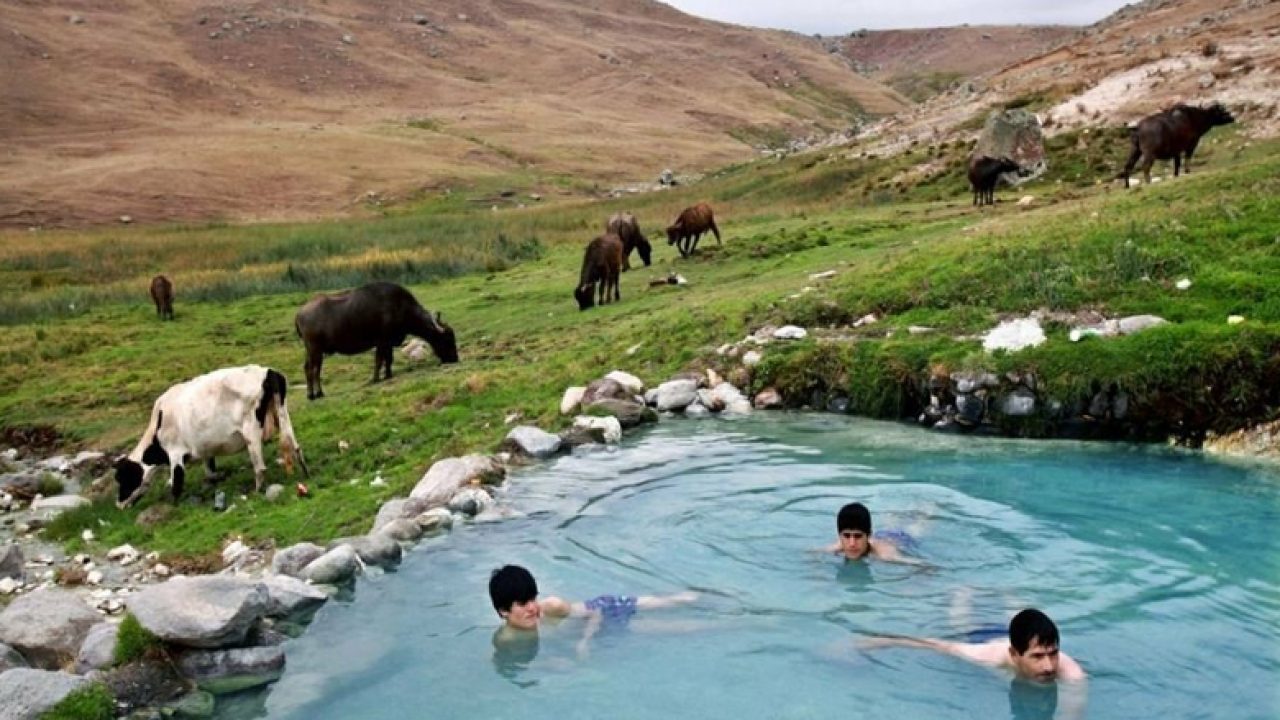
Shorabil Lake
Situated a few kilometers outside Ardabil, Shorabil Lake is a scenic spot offering tranquility, with picnic areas, restaurants, and boat rides during the warmer months.
Shorabil Lake is a picturesque natural attraction located near Ardabil, Iran. This beautiful lake is a popular destination for both locals and tourists, offering stunning scenery and recreational activities. Here’s more information about Shorabil Lake:
Natural Beauty: Shorabil Lake is set against a backdrop of the Alborz mountain range, creating a serene and breathtaking landscape. The pristine blue waters of the lake surrounded by lush greenery make it a peaceful and visually appealing destination.
Size and Features: The lake spans an area of about 180 hectares (445 acres) and has an average depth of around 3 meters (10 feet). Its size can vary due to seasonal changes and rainfall. There’s a small island in the middle of the lake that adds to its charm.
Recreational Activities: Visitors come to Shorabil Lake to enjoy various leisure activities. Boating and paddle boating are popular, allowing visitors to explore the lake’s calm waters and the island at the center. Additionally, there are recreational facilities like restaurants, cafes, and picnic areas around the lake.
Natural Surroundings: The lake is surrounded by a well-maintained park and walking paths, making it an ideal place for a relaxing stroll or a picnic with family and friends. The area is rich in flora, and during spring and summer, the blossoming trees and flowers add to the beauty of the surroundings.
Local Culture and Events: Shorabil Lake is not just a natural attraction; it also serves as a venue for local cultural events, festivals, and celebrations. Visitors might have the chance to experience local music, traditional performances, and other cultural activities when events are scheduled.
Therapeutic Benefits: The lake’s natural mineral-rich thermal waters are believed to have therapeutic properties, attracting people seeking the potential health benefits of the mineral springs.
Shorabil Lake provides a peaceful escape from the city, offering natural beauty, recreational opportunities, and a chance to enjoy the tranquil surroundings. It’s a popular spot for both locals and tourists seeking relaxation, leisure activities, and a connection with nature.
Imamzadeh Saleh Shrine
A revered shrine with a beautiful dome and intricate tilework, dedicated to the nephew of the eighth Shia Imam.
Imamzadeh Saleh Shrine is a significant religious site located in Ardabil, Iran. It is a revered shrine dedicated to Imamzadeh Saleh, a descendant of the Shia Imams, and holds spiritual and cultural importance for both locals and visitors. Here are more details about the shrine:
Historical Significance: Imamzadeh Saleh was a revered figure believed to be a descendant of the 7th Shia Imam, Musa al-Kadhim. The shrine was built to honor his life and teachings and serves as a place of pilgrimage for Shia Muslims.
Architecture and Design: The shrine features traditional Persian Islamic architecture, with a distinctive dome and minarets. The exterior and interior of the shrine are adorned with intricate tilework, calligraphy, and decorative elements, showcasing the fine craftsmanship of the artisans of that era.
Religious Importance: The shrine is a site of veneration for pilgrims who visit to pay their respects, seek blessings, and offer prayers. It holds spiritual significance in the local community and among Shia Muslims, drawing devotees who come to seek spiritual guidance and blessings.
Cultural Heritage: Like many religious sites in Iran, the Imamzadeh Saleh Shrine reflects the cultural and religious heritage of the region, providing insight into the beliefs and traditions of the local population and the historical reverence for religious figures.
Local Customs and Traditions: Visitors can observe and participate in various religious rituals and customs observed by pilgrims, offering a glimpse into the practices and traditions associated with reverence and devotion at the shrine.
The Imamzadeh Saleh Shrine is not only a religious site but also a cultural landmark, attracting both religious pilgrims and tourists interested in exploring the spiritual and historical facets of Ardabil’s heritage. Its architecture, historical significance, and religious importance make it a notable destination for those interested in Iran’s cultural and religious legacy.

Ardabil Anthropology Museum
Offers insights into the local history, culture, and traditions of the Ardabil region.
The Ardabil Anthropology Museum, also known as the Ardabil Museum, is a cultural institution located in Ardabil, Iran. This museum focuses on showcasing the history, cultural heritage, and ethnography of the Ardabil region. Here are more details about the Ardabil Anthropology Museum:
Exhibits: The museum houses a diverse collection of artifacts, displays, and exhibits that highlight the cultural and historical aspects of Ardabil and its surrounding areas. Exhibits include traditional clothing, handicrafts, musical instruments, ancient tools, historical documents, and other objects that represent the region’s cultural heritage.
Ethnographic Collections: Visitors can explore exhibits that provide insights into the lifestyle, traditions, and daily life of the local population in Ardabil. These displays often feature items used in daily activities, traditional ceremonies, and crafts, offering a glimpse into the region’s past.
Historical Context: The museum aims to present the historical context of the Ardabil region, displaying objects and information that help visitors understand the cultural evolution and historical background of the area.
Promotion of Local Culture: Through its exhibitions and displays, the museum contributes to the preservation and promotion of the unique cultural identity of Ardabil, allowing both locals and visitors to learn and appreciate the region’s rich cultural heritage.
Educational and Cultural Significance: The museum serves as an educational resource, offering opportunities for learning about the history and cultural practices of the region. It also helps in raising awareness and appreciation for the diverse cultural traditions of Ardabil.
Visitors to the Ardabil Anthropology Museum have the chance to explore and understand the local culture, customs, and history of the Ardabil region through its diverse collection of exhibits and artifacts. It stands as a valuable institution preserving and sharing the cultural heritage of the area, allowing visitors to delve into the rich history and traditions of the region.
Sarein
While not in Ardabil city itself, Sarein is a nearby town famous for its hot springs. Many visitors come here to enjoy the therapeutic benefits of its mineral-rich thermal waters.
Sarein is a town located in the Ardabil Province of Iran, approximately 30 kilometers from the city of Ardabil. It’s renowned for its natural hot springs and is a popular destination for both domestic and international tourists seeking relaxation, therapeutic treatments, and scenic beauty. Here’s more information about Sarein:
Hot Springs: Sarein is best known for its natural hot springs, which are believed to have therapeutic properties due to their mineral content. The town’s hot springs are a major attraction, drawing visitors looking to benefit from their healing properties and relax in the warm mineral-rich waters.
Thermal Resorts and Spas: Sarein offers a range of thermal resorts and spa facilities that provide various amenities and treatments centered around the hot springs. Visitors can enjoy soaking in pools, receiving massages, and partaking in other wellness activities.
Health and Wellness Tourism: Many people visit Sarein seeking relief from various health conditions, such as arthritis, joint pain, and skin ailments, as the mineral-rich waters are thought to offer therapeutic benefits.
Scenic Surroundings: Apart from the hot springs, Sarein is surrounded by beautiful natural landscapes. The town is nestled in the Alborz mountain range, offering stunning views and opportunities for outdoor activities such as hiking and nature walks.

Local Culture and Cuisine: Sarein provides a glimpse into local culture, offering traditional Iranian cuisine and the opportunity to experience the local way of life. Visitors can explore local markets, try regional dishes, and engage with the friendly locals.
Tourism Infrastructure: Over the years, Sarein has developed its tourism infrastructure to accommodate the growing number of visitors. There are numerous hotels, guesthouses, and facilities to cater to the needs of tourists.
Sarein’s hot springs, along with its scenic beauty and wellness facilities, attract a diverse range of travelers seeking both relaxation and therapeutic benefits. It’s a place where visitors can unwind, enjoy nature, and experience the healing properties of the natural hot springs while immersing themselves in the local culture of the region.
Neor Lake
Another picturesque lake near Ardabil, Neor Lake offers beautiful scenery and opportunities for outdoor activities such as hiking and nature appreciation.
Neor Lake is a stunning natural attraction located in the Ardabil Province of Iran, near the city of Ardabil. It’s known for its breathtaking natural beauty, offering visitors a serene and picturesque environment. Here are more details about Neor Lake:
Natural Beauty: Neor Lake is nestled amid the mountains of the Talesh and Ardabil region, offering a picturesque setting with crystal-clear waters and surrounded by lush greenery. The lake’s beauty is accentuated by its tranquil atmosphere and the reflection of the surrounding landscape on its surface.
Size and Features: Neor Lake is a relatively large alpine lake, covering an area of around 220 hectares (544 acres). Its depth can reach up to approximately 5 to 6 meters (16 to 20 feet). The lake’s size and depth can vary based on seasonal changes.
Scenic Views and Outdoor Activities: The lake’s serene surroundings make it an ideal spot for nature lovers, hikers, and photographers. Visitors can take leisurely strolls along the lakeshore, go hiking in the nearby hills, or simply relax and enjoy the beautiful scenery.
Bird Watching and Wildlife: Neor Lake is home to various species of birds and wildlife, making it an attraction for bird watchers and nature enthusiasts. During certain seasons, visitors might observe migratory birds and diverse wildlife in the area.
Accessibility and Facilities: The lake is accessible by road, and there are some facilities in the vicinity, such as picnic areas and viewpoints. However, visitors should be prepared as the area might not have extensive amenities.
Neor Lake is a serene and tranquil destination, providing an escape into nature and offering a chance to appreciate the natural beauty of the region. Visitors can immerse themselves in the peaceful surroundings, take in the stunning views, and enjoy outdoor activities in this picturesque alpine setting.
Sheitan Koh (Devil’s Castle)
A geological formation with unique rock structures and caves, perfect for hiking and exploration.
Sheitan Koh, also known as the Devil’s Castle, is a unique geological formation located in the Ardabil Province of Iran. It’s a natural wonder characterized by its peculiar rock formations and caves, often associated with local legends and folklore. Here are more details about Sheitan Koh:
Geological Formation: Sheitan Koh features a series of naturally occurring rock formations, composed of hoodoos, erosional pillars, and unusual shapes that resemble towers or castles. These formations have been shaped by wind and water erosion over thousands of years.
Local Folklore: The name “Devil’s Castle” comes from local folklore and legends that have associated the site with mystical or supernatural beliefs. The unique shapes and formations have given rise to stories and tales, contributing to the mystique surrounding the area.

Hiking and Exploration: The site offers opportunities for hiking and exploration. Visitors can navigate the paths around the formations, venture into caves, and admire the unusual rock structures. It’s a popular spot for adventurers, hikers, and those interested in unique geological formations.
Scenic Views: Sheitan Koh provides stunning panoramic views of the surrounding landscapes, including the mountainous terrain of the region and the nearby valleys. The otherworldly appearance of the rock formations adds to the scenic beauty of the area.
Photography and Nature: The distinct rock formations and the picturesque surroundings make Sheitan Koh an ideal location for photography enthusiasts, providing a backdrop for capturing the beauty of nature and the unusual geological features.
Sheitan Koh, or the Devil’s Castle, offers a unique landscape that attracts visitors interested in natural wonders, geology, folklore, and outdoor exploration. The site’s distinctive formations, coupled with local tales and its picturesque setting, make it an intriguing and visually captivating destination in the Ardabil Province of Iran.
Ardabil Dash Castle
An ancient castle with a unique history, offering a glimpse into the region’s past.
These attractions offer a diverse experience, from historical and cultural sites to natural wonders, ensuring a well-rounded visit to Ardabil and its surrounding areas.
Ardabil Province in Iran is renowned for several historical landmarks, cultural sites, and natural attractions. Dash Castle might refer to a local historical structure, but if it exists, it may not be as prominent as some of the more well-known attractions in the area such as the Sheikh Safi al-Din Khanegah and Shrine Ensemble, Ardabil Bazaar, Shorabil Lake, and various mosques and museums.

